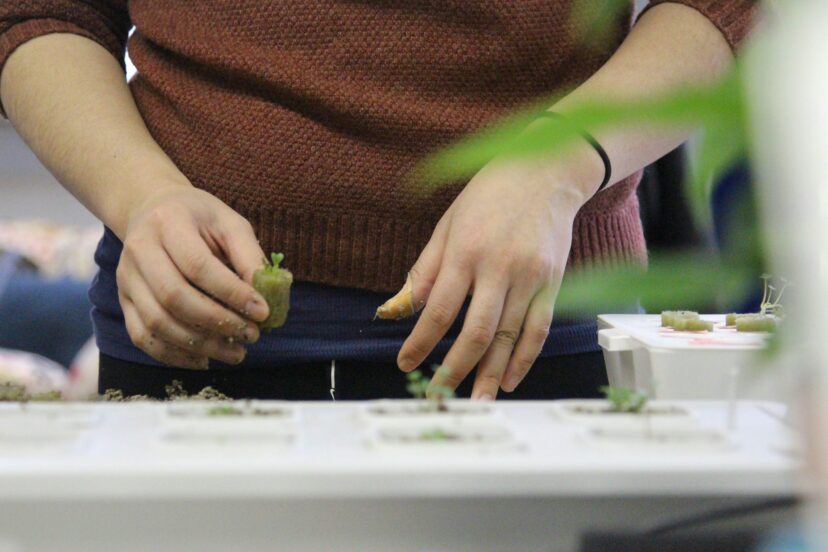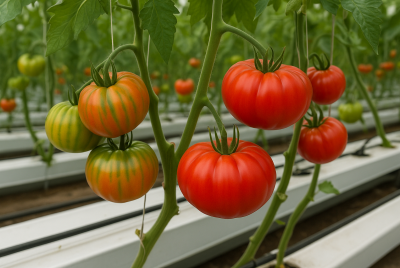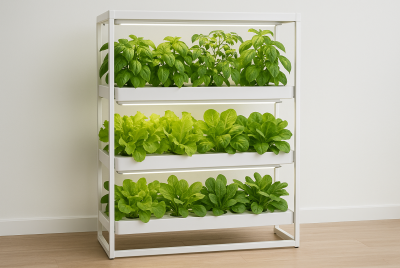How to Grow Fresh Vegetables with DIY Hydroponics
We may earn a commission for purchases made using our links. Please see our disclosure for more details.
Are you sick of managing poor soil, annoying pests, or just not having enough space for a garden? Same. With regular weeding, watering, and hoping the weather doesn’t spoil everything, traditional gardening may be a complete trouble. But you know what? With DIY hydroponics, you can grow tasty, fresh vegetables without soil, mess, or worry! Installing a basic water-based system will result in faster growth, larger harvests, and year-round fresh produce. Who knew it could be so simple to grow your own food? Let’s dive into how you can get started with it!
What is Hydroponics?
Let’s define the basics before getting into the how-to. With hydroponics, plants are grown without the use of soil. Rather, they are immersed in water that has all the vital elements that plants require to flourish. In essence, they get their nourishment from the water. The theory is that nutrients are immediately absorbed by the roots of the plant from the water, perhaps resulting in increased yields and quicker growth. It’s similar to giving your plants a daily vitamin boost!
Why Choose DIY Hydroponics?
So, why bother with hydroponics when you could just use soil? Good question! DIY hydroponics is worthwhile for a number of reasons:
- Faster Growth: Plants that can obtain all of their nutrients from water have a tendency to grow more quickly than those that are in soil.
- Less Space Needed: Hydroponics can be used in small areas, whether you have a yard or a tiny apartment.
- Water Conservation: Compared to conventional gardening techniques, hydroponics systems use significantly less water because they recycle
- Fewer Pests: Plant maintenance is somewhat simplified when soil is absent because soil-borne pests like aphids are avoided.
Pretty neat, right? Let’s see how you can set up your own system!
Essential Materials for DIY Hydroponics
Okay, let’s talk about what you’ll actually need. If you’re picturing expensive, high-tech gear, don’t worry—getting started with DIY hydroponics doesn’t have to break the bank. Here’s a simple list of the essentials:
- Containers: You’ll need something to hold the plants and the nutrient solution. This could be anything from a plastic tub to an old bucket you have lying around.
- Grow Medium: While you’re not using soil, your plants still need something for their roots to hold onto. Popular choices are clay pellets, perlite, or coconut coir.
- Water Reservoir: This is where the nutrient solution sits. You’ll need something to hold the water for your plants to “drink.”
- Air Pump & Air Stone: These help oxygenate the water, which keeps the plant roots happy and healthy.
- Hydroponic Nutrients: You can’t just use tap water. You’ll need special nutrients made for hydroponic systems to ensure your plants get everything they need.
- pH Meter & Testing Kit: Plants like their water at a certain pH level. So, checking this regularly is key.
- Grow Lights (Optional): If you’re growing indoors, you’ll need some artificial lighting unless you’ve got a spot with plenty of natural sunlight.
With these materials, you’re ready to start building your hydroponic garden.
The Basics of Hydroponic Plant Growth
Now that you have your supplies, let’s talk about how it actually works. In a typical garden, the soil provides the plants with nourishment. However, hydroponics involves immersing the roots of plants in a nutrient-rich water solution. The plants don’t have to scrounge far below the surface to find sustenance; it’s like a never-ending buffet. The outcome? Because they aren’t wasting energy looking for nutrients in the soil, your plants can grow faster. It all comes down to providing them with what they require at the appropriate time!
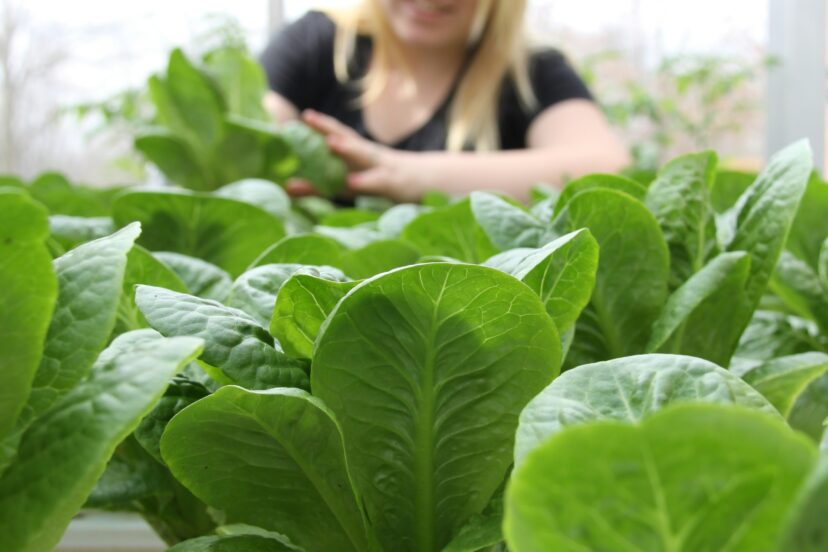
Choosing the Right Vegetables for DIY Hydroponics
Not all veggies are created equal, especially when it comes to hydroponics. Some plants love the system, while others might need a little more TLC. If you’re just starting out, here are some great vegetables to grow in your DIY hydroponics setup:
- Lettuce: This leafy green is a hydroponic superstar. It grows quickly and doesn’t require too much effort.
- Spinach: Like lettuce, spinach is perfect for hydroponic systems. It thrives in the controlled environment hydroponics offers.
- Tomatoes: While they need a bit more attention, tomatoes can do well in hydroponics, especially if you have the right setup.
- Cucumbers: These are great for hydroponics because they grow quickly and produce a lot of fruit.
- Herbs: Basil, cilantro, and mint are fantastic choices for indoor hydroponic gardens.
Start with these easy-to-grow options, and as you get more comfortable, you can try out other vegetables!
Key Research on Hydroponics Systems
Hydroponics has been widely studied for its efficiency and potential in modern agriculture. The National Park Service provides a detailed overview of hydroponics, highlighting its benefits such as water conservation and faster plant growth in controlled environments. Additionally, a study published by MDPI reviews hydroponic vegetable production, discussing various systems and their effects on growth, nutrient uptake, and yield optimization. Both pieces of research emphasize hydroponics as a sustainable solution for urban farming and food production.
Types of DIY Hydroponic Systems
Here’s where it gets fun—you get to choose which hydroponic system works best for you. There are several types, and they vary in complexity. Let’s take a look at a few popular ones:
1. Wick System
If you’re just getting started, this is probably the simplest system. It uses a wick (like a piece of rope) to pull water up to the plant’s roots. It’s great for small plants like herbs and lettuce.
2. Deep Water Culture (DWC)
In this method, the roots of the plants are submerged in water while the plants float in a nutrient-rich solution. Plants grow more quickly when the water is kept oxygenated by an air pump. DWC is suitable for herbs like basil and leafy greens like lettuce.
3. Nutrient Film Technique (NFT)
NFT is a bit more advanced, but it’s still beginner-friendly. This system has a continuous flow of nutrient solution that runs over the plant roots. It’s great for fast-growing plants like lettuce.
4. Ebb and Flow System
This system floods the plants with nutrient solution periodically before draining it away. The roots get oxygen during the draining process. It works well for a wide range of plants, including fruiting vegetables like tomatoes.
5. Kratky Method
A low-maintenance, no-pump setup, this method allows plants to grow suspended above a nutrient reservoir. It’s simple, effective, and perfect for beginners.
Setting Up Your DIY Hydroponic System
Now that you know about the different systems, let’s get to the fun part—setting up your DIY hydroponics garden. Here’s a simple breakdown of the steps:
Step 1: Choose a Location
Pick a spot that gets good light. If you’re growing indoors, you’ll need access to electricity for pumps and grow lights.
Step 2: Prepare Your Containers
Get your containers ready to hold the plants and nutrient solution. Make sure they’re clean to avoid any issues down the road.
Step 3: Add the Grow Medium
Fill your containers with your chosen grow medium. This is what the plant roots will anchor into, so make sure it’s spread evenly.
Step 4: Set Up the Water Reservoir
Place your water reservoir close to the plants, and fill it with water. Add your hydroponic nutrients according to the instructions, and adjust the pH if necessary.
Step 5: Install the Air Pump & Air Stone
For systems like DWC, use an air pump and stone to oxygenate the water. This keeps the roots healthy and ensures the plants get enough air.
Step 6: Transplant Your Seedlings
Now it’s time to get your plants into the system. Gently place the seedlings in the grow medium, making sure they’re secure.
Step 7: Monitor and Maintain
Check your system regularly. Keep an eye on the water levels, pH, and nutrient concentration. This is key to keeping everything running smoothly.
Caring for Your Hydroponic Vegetables
Once your system is up and running, it’s time to take care of your plants. Here are a few tips to keep things running smoothly:
- Check the Nutrient Solution: Refill your water and nutrient solution regularly to make sure your plants are getting the right amount of food.
- Watch the pH Levels: Regularly test the pH to ensure it’s within the ideal range for your plants.
- Clean Your System: Every few weeks, clean out your system to prevent algae growth or nutrient buildup.
- Monitor for Pests: Even though hydroponic systems reduce pests, it’s still important to check your plants regularly.
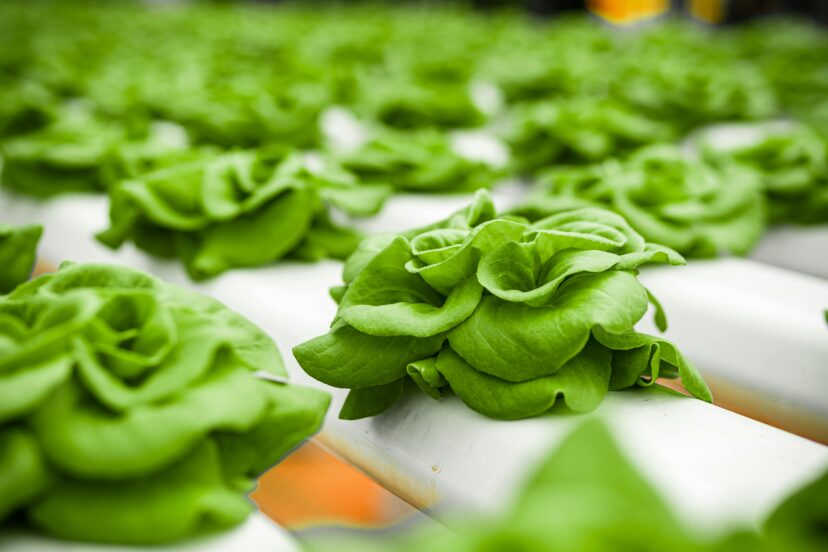
Troubleshooting Common Problems in DIY Hydroponics
As with any gardening method, you might run into a few issues. Here’s a quick guide to troubleshooting common hydroponic problems:
- Yellow Leaves: This could mean your plants are lacking in nutrients or the pH is off.
- Slow Growth: If your plants aren’t growing as quickly as expected, make sure they’re getting enough light and nutrients.
- Root Rot: Ensure that the water is well-oxygenated and that you’re changing it regularly.
Harvesting Your Hydroponic Vegetables
After all the hard work, the best part comes—harvesting your veggies! Depending on the plant, you might be able to start picking fresh greens in just a few weeks. Be sure to harvest regularly to encourage more growth. The more you pick, the more your plants will produce!
Conclusion
Growing fresh vegetables with DIY hydroponics is a fun, sustainable, and space-efficient way to enjoy homegrown food. Whether you’re a seasoned gardener or a complete newbie, this method is a great way to enjoy fresh produce all year round. With a little setup, some regular maintenance, and a bit of patience, you’ll be growing your own veggies like a pro in no time!
FAQs
1. Can I grow all vegetables in a hydroponic system?
Not all vegetables thrive in hydroponics, but leafy greens, herbs, and some fruiting plants like tomatoes do really well.
2. How often do I need to change the water in a hydroponic system?
It’s recommended to change the water and nutrient solution every 1-2 weeks to keep things fresh and healthy.
3. Can I use tap water for hydroponics?
Yes, you can use tap water, but make sure to check the pH and nutrient levels. Some tap water may have chemicals like chlorine that can affect plant growth.
4. Do hydroponic vegetables taste better than soil-grown ones?
Many people find hydroponic vegetables have a fresher, more vibrant flavor because they grow in a controlled environment.
5. What should I do if my plants show signs of nutrient deficiency?
If your plants start showing yellowing leaves or stunted growth, check the nutrient solution and pH levels to see if they need adjusting.

